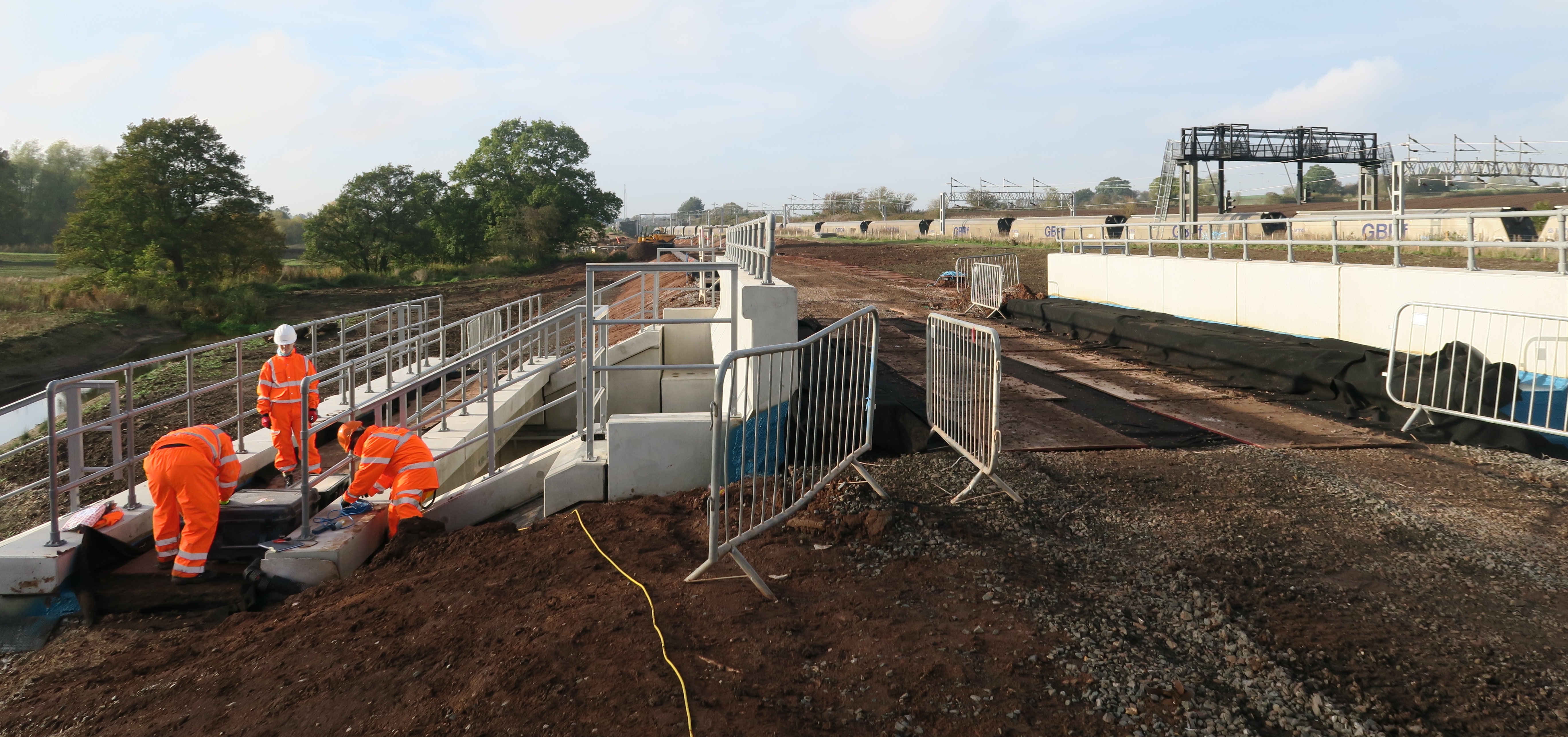Submitted by L. Millard on Thu, 11/02/2016 - 11:22
CSIC is working with the Staffordshire Alliance, a collaborative partnership between Network Rail, Atkins, Laing O’Rourke and VolkerRail, to provide a faster, more reliable network for the travelling public on the West Coast Main Line near Crewe.
 Image: CSIC deployment team instrumenting a rail bridge on the Stafford Area Improvements Programme. Photograph by Liam Butler
Image: CSIC deployment team instrumenting a rail bridge on the Stafford Area Improvements Programme. Photograph by Liam Butler
The £250m Stafford Area Improvements Programme will increase capacity, allow for train speeds up to 100 mph (160 kph), and aims to both reduce congestion and improve maintainability.
Collaborating with its Industry Partners from the start of this project presented CSIC with an opportunity to use fibre optics to deliver the most comprehensively instrumented new rail bridges in the UK. CSIC has implemented the monitoring systems in a pre-stressed concrete girder bridge and a steel composite girder bridge, two of the 11 new bridges being constructed as part of this major improvement programme. With the advent of innovative and robust structural monitoring systems, smarter, more objective and reliable performance data can be collected from the beginning of a structure’s life.
“The aim is to develop a robust, highly distributed and real-time fibre optic based bridge monitoring and data collection system,” said Liam Butler, Research Associate at CSIC. “Traditionally the asset management and maintenance of bridges has principally relied on data obtained through periodic visual inspections as a basis for establishing repair and maintenance programmes. By incorporating structural sensing technology into bridge components at the construction stage we can establish a comprehensive performance baseline for future condition assessment and structural model updating.”
CSIC’s collaboration with the Staffordshire Alliance team enabled - for the first time in the rail sector - distributed fibre optic Brillouin Optical Time Domain Reflectometry (BOTDR) and a fibre Bragg point based gratings system (FBG) to be implemented to measure changes in strain and condition in real time from when the bridge components are manufactured. The outputs of these sensors have already provided some fundamental data to determine static and dynamic load responses.
Another first was the installation of fibre optic cabling within off-site manufactured pre-stressed concrete bridge girders. Embedding fibre optic sensors into structures off-site will make the installation of these sensors much easier and more cost effective, and will aid longevity of this type of installation. This technology will contribute to a better understanding of whole life value and condition monitoring of rail bridges.
“We are very excited to be part of this project. The need for better, more accurate and configurable real-time monitoring of our assets is of vital importance for the industry,” said Ruth Platt, Associate at Atkins. “This is a very real step in the development of our understanding of this type of structure and will be extremely useful in the future, not only in terms of design, but also so that we can enhance our approach to maintenance planning and asset renewal.”
CSIC is also investigating the load deformation response of railway track structures utilising fibre optic sensing, dynamic laboratory testing and finite element modelling.
“This project represents the first time new rail bridges have been instrumented in such detail to understand their structural behaviour from the moment they are created,” said Liam. “We hope that the findings of this work will provide valuable feedback for the design of future large scale infrastructure projects and could lead to more economic designs and more efficient asset management strategies.”
